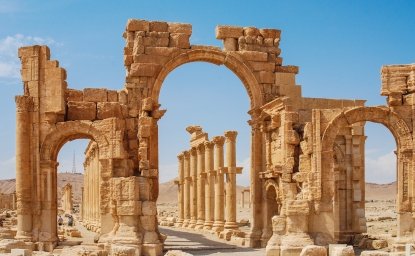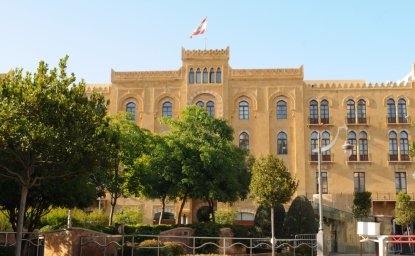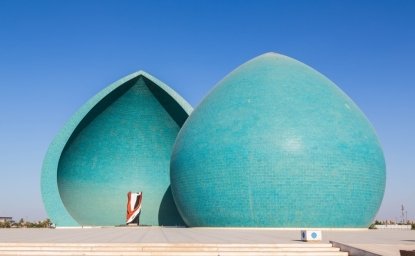Postscript, June 27, 2005
The fairly competitive and polarized presidential election in Iran was highly unusual in both substance and style. No one expected the campaign to be as hotly contested and radical as it turned out to be; the election brought 63 percent of eligible voters to the polls, surpassing all anticipated estimates of voter turn-out. In the runoff election Friday, June 24, the underdog conservative Mayor of Tehran, Mahmoud Ahmadinejad, defeated heavyweight politician and former president Ali Akbar Hashemi Rafsanjani by a landslide.
Despite the call for a broad coalition of reformist and pragmatic conservative groups to support Rafsanjani, Ahmadinejad won the election by running on a populist campaign of anti-corruption and social justice. Ahmadinejad tapped an underestimated and largely forgotten class of urban poor as well as the marginalized and alienated rural masses that are not necessarily in tune with the reformist agenda of human rights and democracy.
The conservative establishment managed to use all its traditional and modern resources to mobilize its solid constituency. Undoubtedly, the vast paramilitary institutions were used to mobilize the core support in favor of the president-elect. One could argue that this was certainly illegal, however, physical rigging and actual ballot stuffing in favor of the preferred candidate was not pervasive. The stark choice between the status quo and change, represented respectively by an old-timer and a new pious and ordinary man of the people, swayed the voter toward change. The change, though, may not necessarily be forward looking.
Given the relative obscurity of the president-elect and his conservative credentials, there is a lot of speculation as to how he will take Iran back to the early years of the Iranian Revolution of 1979, when there was strong revolutionary fervor. Yet, one should not be tempted to jump to broad generalizations based on very scant information. It is prudent to wait and see who Ahmadinejad appoints to key positions and how post-election jockeying for power is settled.
Cognizant of the underlying fluidity and complexity of the Iranian political process, a few general conclusions could be drawn:
- On foreign policy, I would expect very little substantive change, although stylistic and symbolic changes are more likely. Foreign policy is basically a consensus-based undertaking, and he would operate by those directives. Moreover, he would be more cautious, and in all likelihood constrained, by the elder conservative statesmen.
- More changes are expected on domestic issues, particularly economic policies. A general shift to the leftist and more statist economic approaches of the earlier days of the Revolution is expected, probably not to an extent that people are anticipating.
- In social and cultural arenas, there may be some reversals of the openness brought by eight years of Khatami's presidency. Even in those areas, though, there will not be an extreme regression back to the old days.
- More than anything else, the psychological impact of a new generation of conservatives dominating Iranian politics in the early 21st century is creating all the fear and anxiety. Paradoxically, this shift to the right might prove more positive than what everybody is suggesting.
Hadi Semati, June 27, 2005
Media Briefing
"The election, despite all predictions, turned out to be much more competitive than expected," remarked Hadi Semati of the June 17, 2005 presidential election in Iran that has left Former President Ali Akbar Hashemi Rafsanjani and Tehran Mayor Mahmoud Ahmadinejad matched in a runoff election scheduled for June 24. Semati indicated the process was especially surprising, as were the results. This was the first time in twenty-five years of nine presidential elections that there was not one leading candidate. Instead, there was largely a level playing field and competitive process, however unfair because of the vetting process by the conservative Guardian Council.
Semati noted this election was different also because the campaigns were issue-driven, in terms of both foreign and domestic policies, and thus more substantive. According to Semati, this was the first campaign to cross the "red lines," or taboos, of Iranian politics such as discussing the position of the supreme leader. Ultimately, he said, voter apathy was perhaps combated by the emergence of such substantive campaigning and multiplicity of candidates. "The core of this campaign was to appeal to the public to get out and vote by offering starkly different visions for the future of Iran."
Traditional cleavages that were missing during the previous two presidential elections reappeared in this election--- along class lines, geographic boundaries, and between rural and urban distinctions. New alliances also emerged among the reformists and the national religious movements and some secular reformist groups; the latter, Semati explained, had not participated in politics recently.
"But despite the radical nature of the campaign
the results were pretty close," Semati noted. Mayor Ahmadinejad, who participated in the runoff election June 24, "was quite a surprise, even to the conservatives." He said that until the previous week, the conservatives had not reached consensus on who to support, thus dividing those voters. However, in the final week before the election, the conservative Revolutionary Guards and Basijis organized and influenced voters in Ahmadinejad's favor. Semati said this organized support by the military, which is illegal according to Iranian law, surely had an impact on the final turnout, but he remains unconvinced that there was any physical rigging of ballots. "Not even the reformers put forward the solid evidence that ballot rigging happened," Semati said.
As for the run-off election on Friday, Semati predicted a good turnout and wondered if we would be in for another surprise.
Q&A
The following is a paraphrased summary of the question and answer session with several members of the media.
Q: Rafsanjani did not have much success in reforming the state and did not have good relations with U.S. What would the impact be if he won the election?
A: I view Rafsanjani as a modernizer, but not a progressive democrat. He is a modernizer whose actions could lead to more openness. If elected, he may be more successful this time. He has the clout to mobilize resources and can push his agenda; whether he would be able to outmaneuver his staunch conservative opponents, I am not persuaded much.
Q: Is it a sign of the campaign that Iranians are more sophisticated? Is this political growth? Also---the youth make up the majority of the population, yet they voted for a 71-year old. What does that say?
A: The main concern among voters is that Iran needs a competent government, which was embodied in this campaign in Rafsanjani. ‘Who can manage what we need?' Rafsanjani seems more capable and experienced, and voters across the board tend to see him better capable in that quality. Of course, that is relative to other candidates.
Q: Why did the conservatives choose 4 candidates? Also Rafsanjani got less votes than the conservatives did collectively.
A: The conservatives could not agree. They ended up doing something like the U.S. primaries for the 1st time to determine who would be the conservative candidate. But in the end, they couldn't agree and for the first time, no candidate got more than 6.5 million votes. The votes were split among seven candidates and the conservatives suffered more infighting among themselves than the reformists.
Q: Do you think that Bush's comment had an impact on the election and if so, did it backfire for the administration?
A: It was bad timing on the part of the administration because it ended up helping the conservative side by highlighting issues of honor and pride. That said, though it brought more voters out, it did not have great overall impact, ultimately affecting about a small percentage of the population. It will be harder now to say that we can work with the U.S. It puts Rafsanjani, or anybody else that wants to reach out to the U.S., in a tough position, so it had a broadly negative impact. The Iranian TV broadcasted and analyzed President Bush's statement all day long without any editing. It certainly played well into the hands of conservatives. But it probably did not have a significant effect on the overall numbers. Many pitched it as yet another insult and discriminatory policy on democracy when it comes to Iran.
Q: Is there a chance for the conservatives to win?
A: There is a good chance. The conservatives will be out in larger numbers. If the reformists stay home, Mayor Ahmadinejad has a good chance. This is not the time to be indecisive. Even the harshest critics of Rafsanjani support him. I think in the end that Rafsanjani will win, but it is not guaranteed. If the mayor wins, I don't think there will be dramatic change. The process of reform is irreversible. There could be marginal reversals, but the youth will react. The conservative leadership would have to calm the mayor's aggressive policies. However, this is an upsetting political event that could be a blow to the progress that has been made over the last few years.
Q: How do you respond to the fact that the mayor was the only one in the campaign that did not go too far with grandstanding, bringing women into the campaign, etc.?
A: There is more money in campaigning now, but not nearly to the level of a U.S. campaign. The average Iranian seemed to have been more concerned with their bread and butter issues and the mayor's campaign resonated better than others on that count, both in substance and style.
About Hadi Semati
Dr. Mohammed Hadi Semati is a Public Policy Scholar at the Wilson Center on leave from his position as Assistant Professor in the Faculty of Law and Political Science at Tehran University, Iran. Previously, in 2004, Dr. Semati was a visiting scholar with the Democracy and Rule of Law Project at the Carnegie Endowment for International Peace in Washington, DC where he participated in the Endowment's Middle East Political Reform Initiative. He is a prolific writer and frequent commentator on Iranian domestic and foreign affairs, including Iran's security issues, political reform in Iran's foreign relations, and the Islamic revolution. Recent publications include "The Coming Generation in Iran: Challenges and Opportunities", in Security in the Persian Gulf: Origins, Obstacles, and Search for Consensus and Iran's Security Priorities, Gulf Security: Opportunities and Challenges for the New Generation. Dr. Semati received his M.A. and Ph.D. from the University at Tennessee at Knoxville.
Related Links




